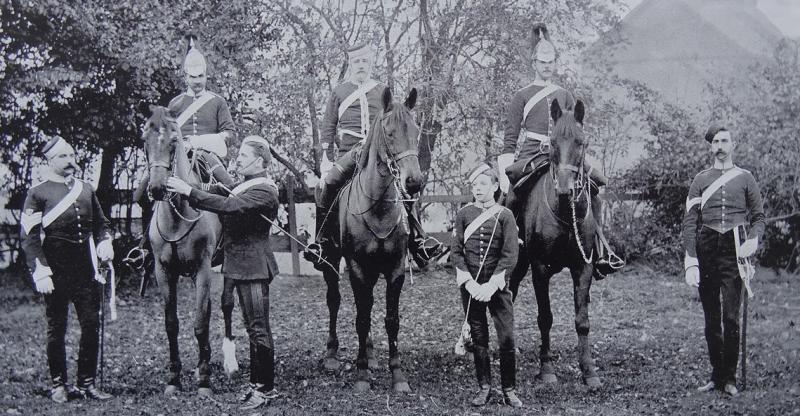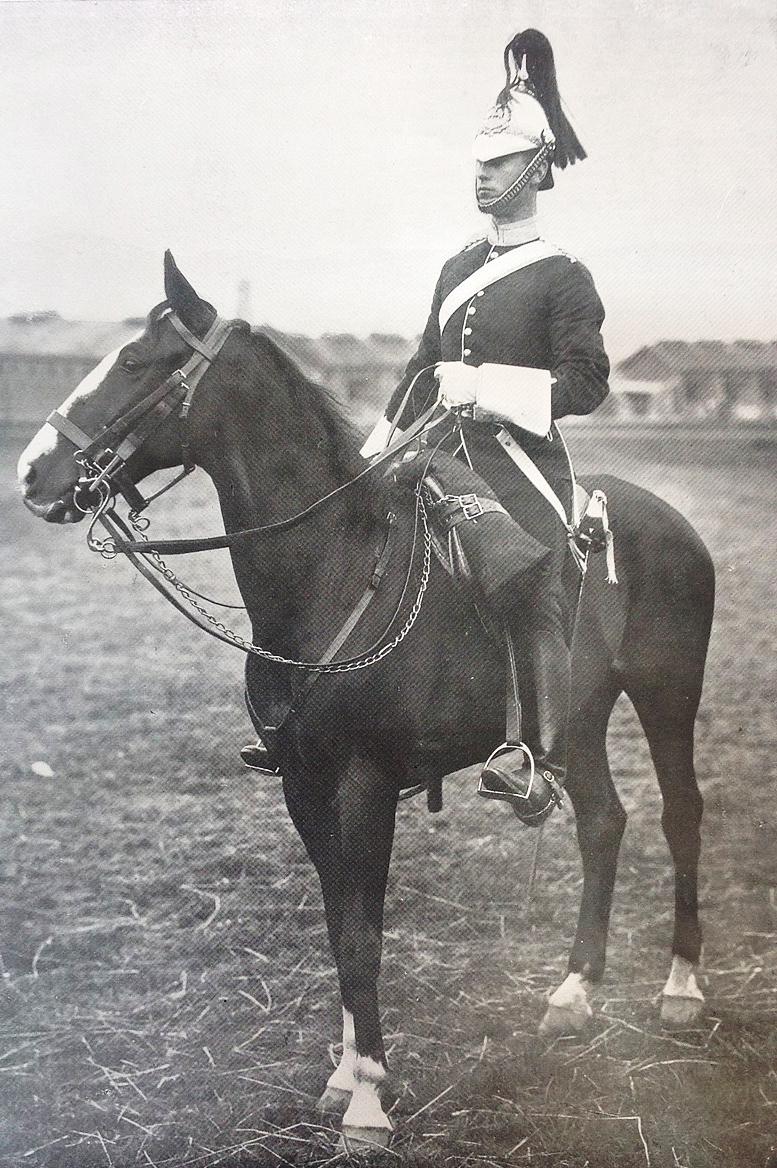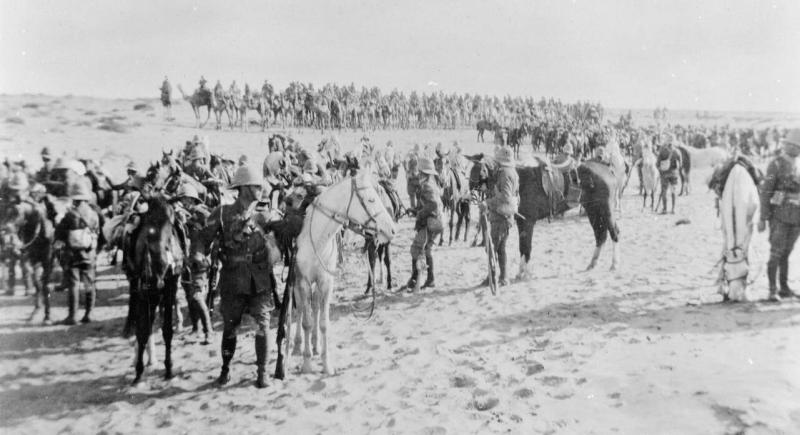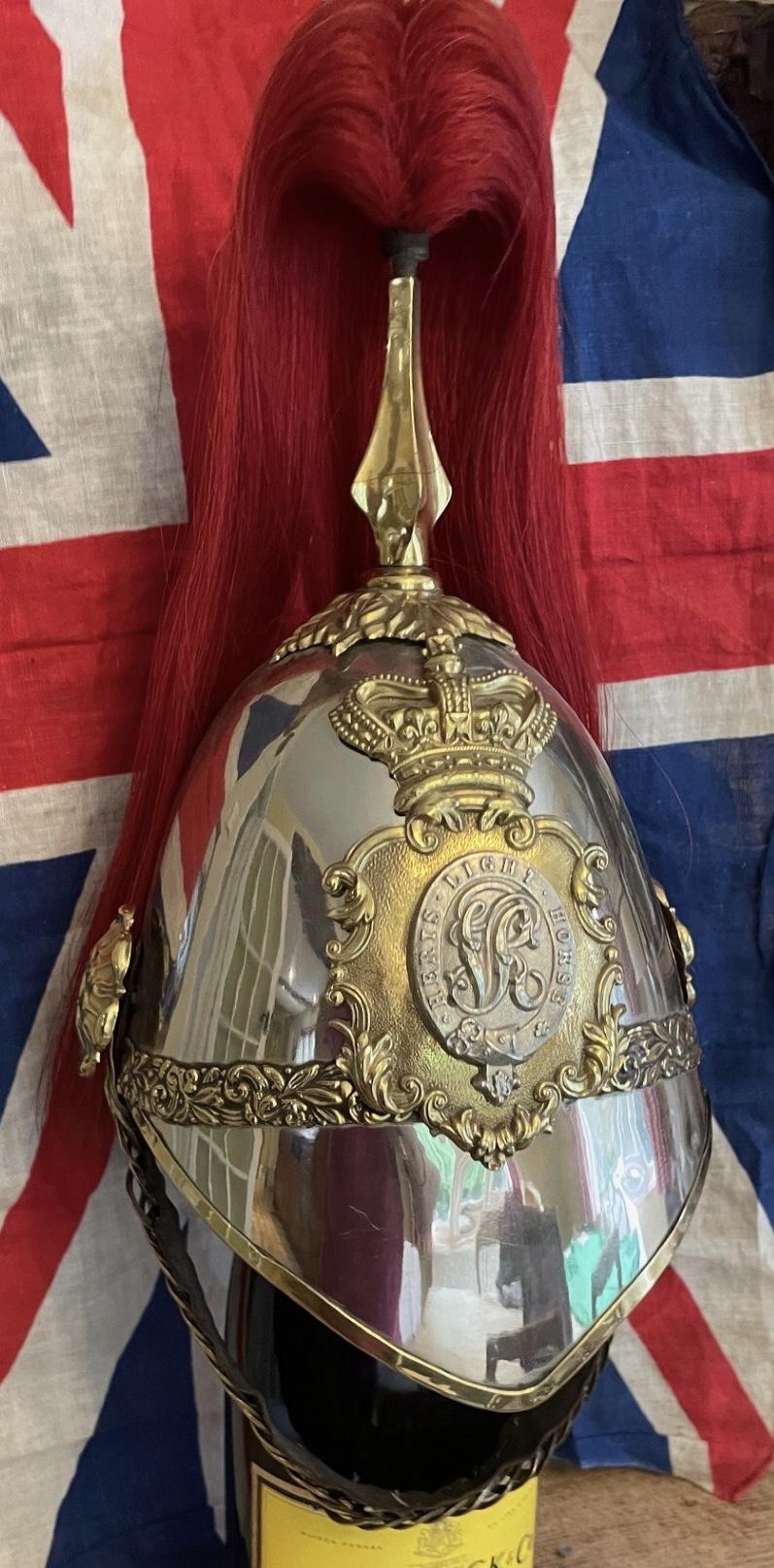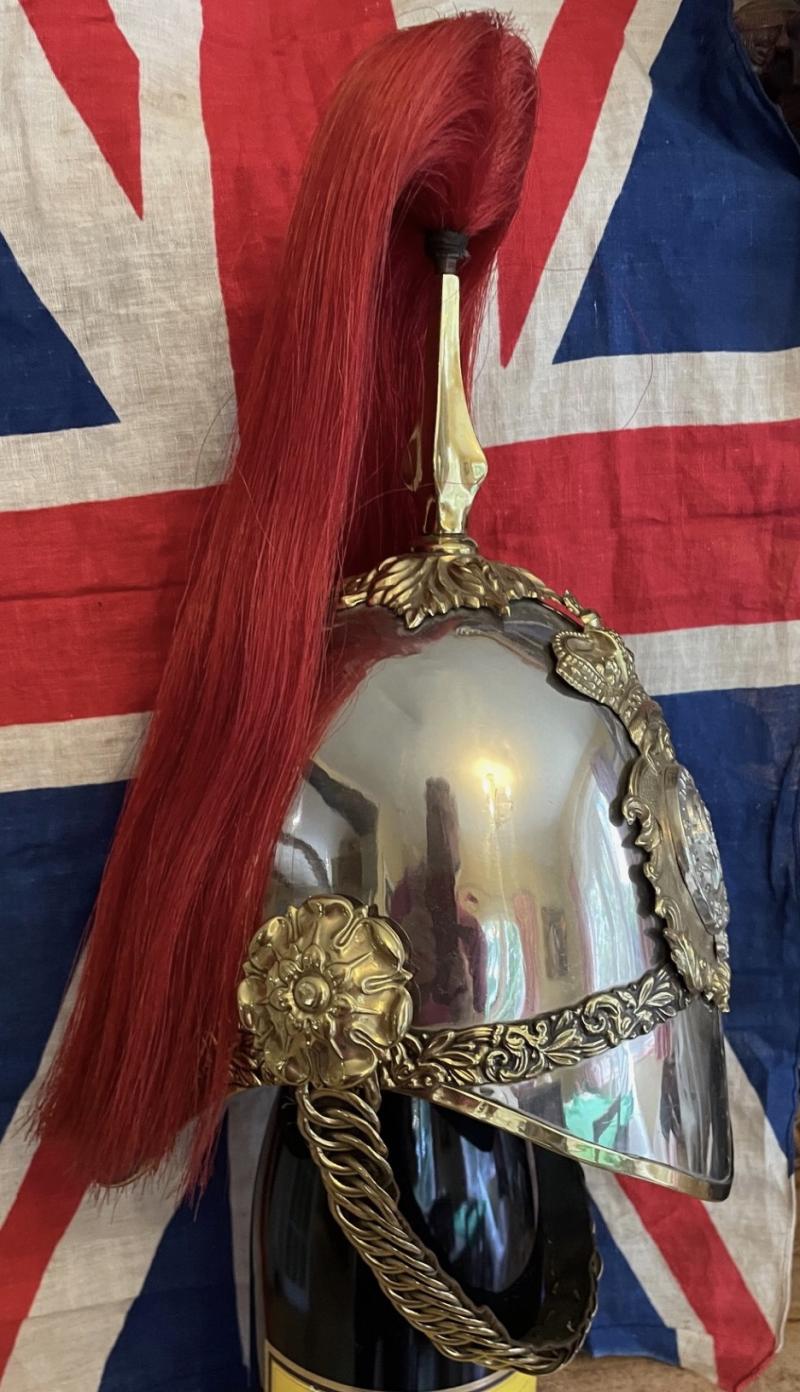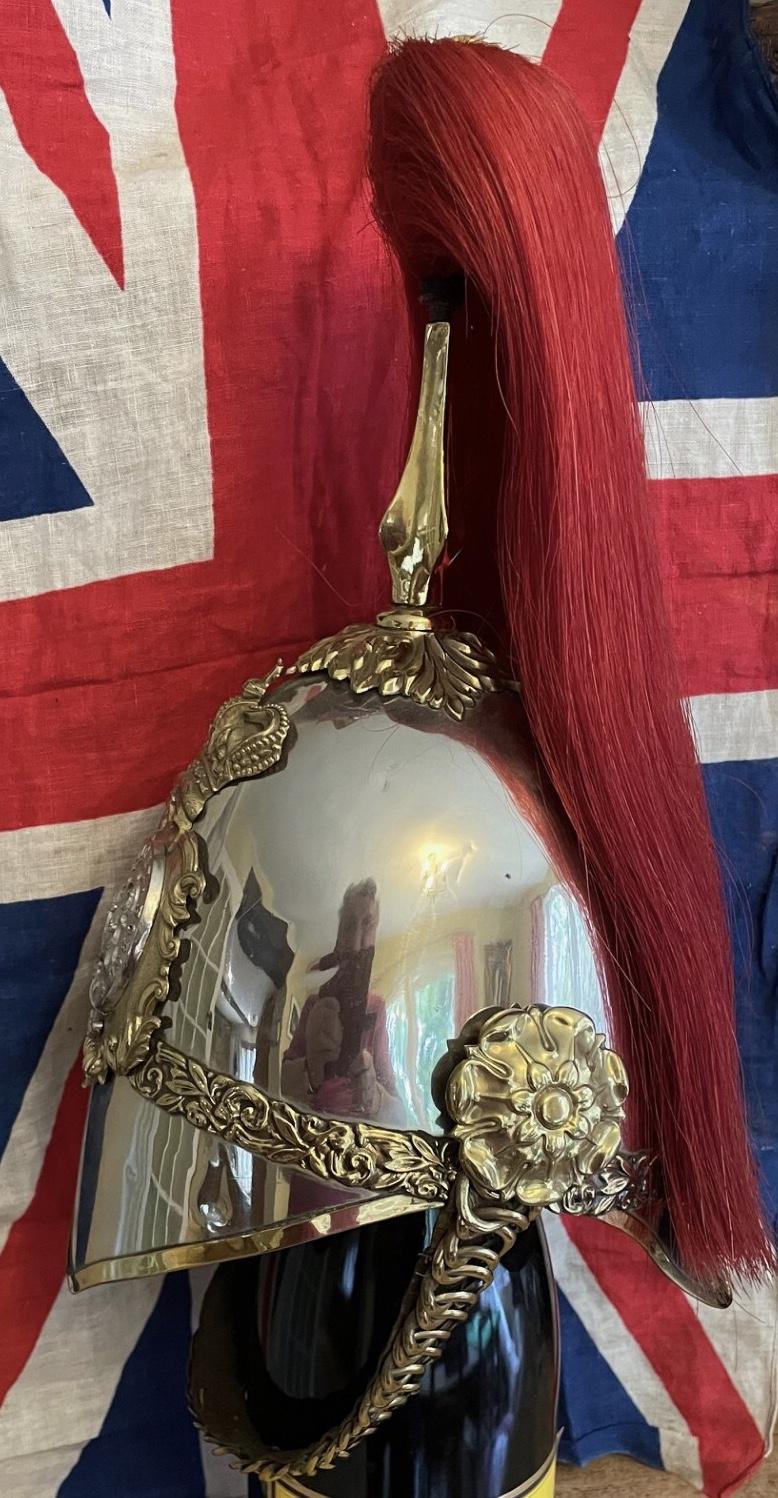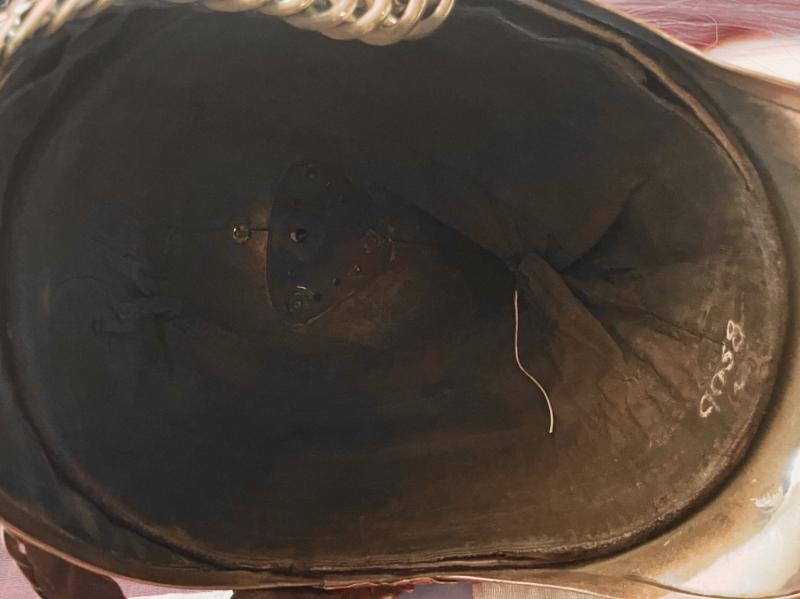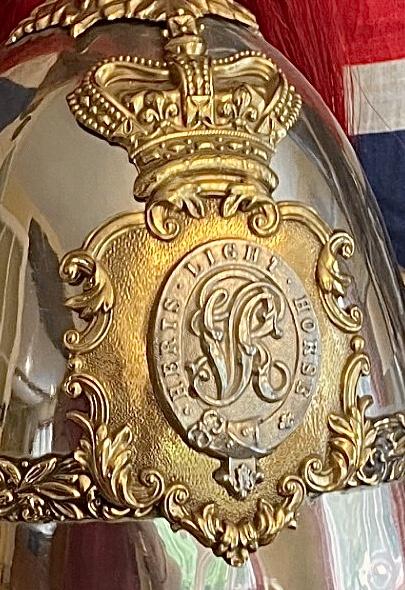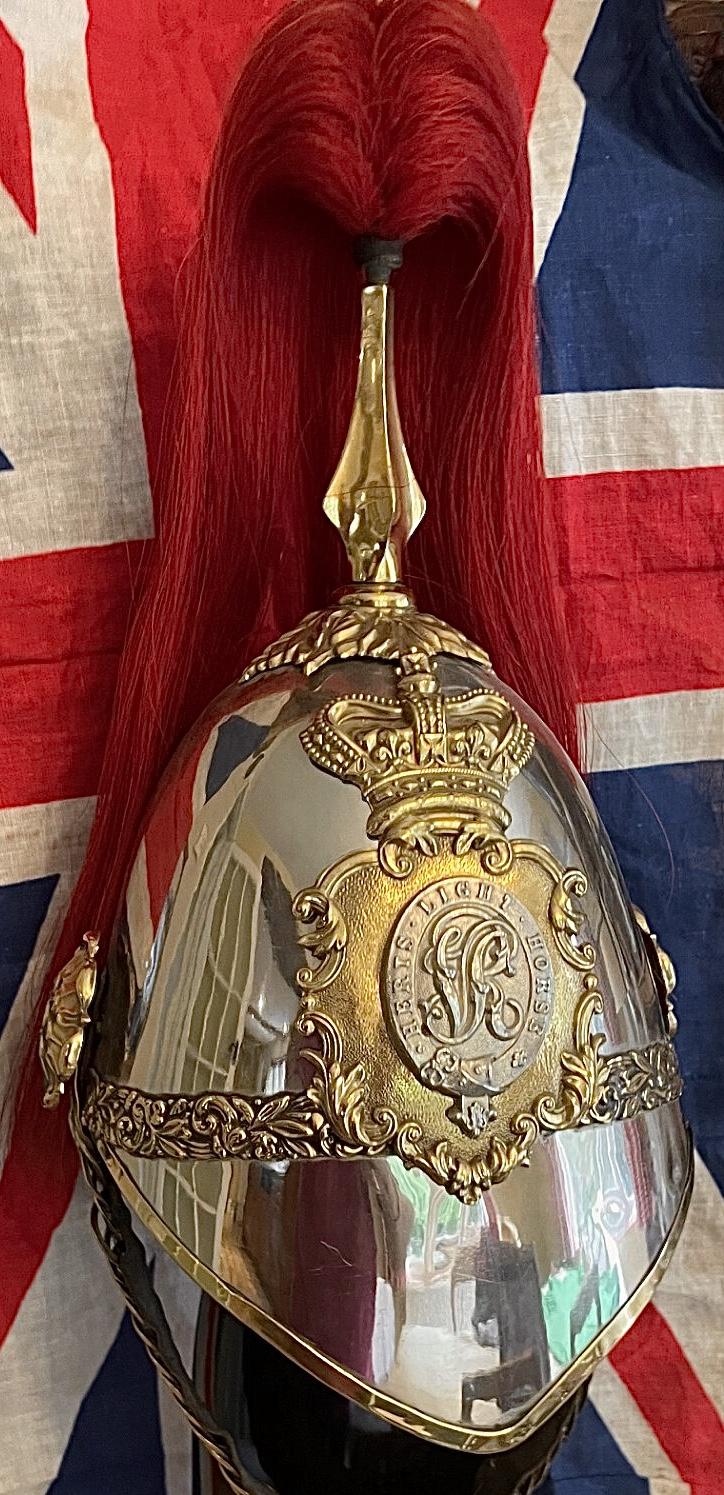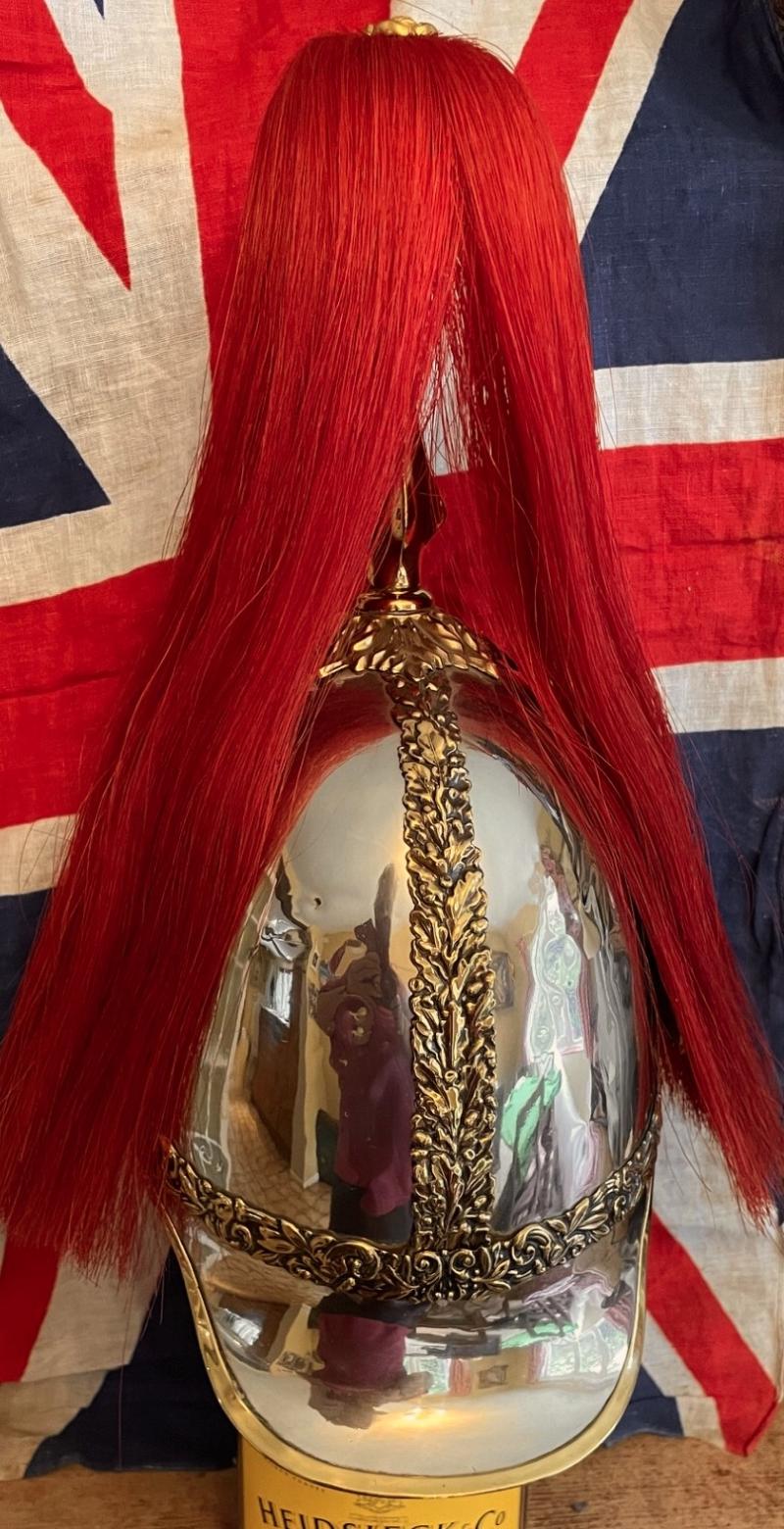A Most Rare Antique Museum Piece. A Glorious Victorian 'Albert Pattern' Helmet Of The First Hertfordshire Light Horse Volunteers, Formed in 1862. Only 98 Of These Helmets Were Ever Made & And It Is Likely Barely a Handfull Still Survive Intact Today
Formerly, from one of the most important, private, original, antique helmet collections in the country. {Details provided for the next owner}
The Hertfordshire Light Horse, more formally the Hertfordshire Yeomanry, was a yeomanry cavalry regiment of the British Army with a long history dating back to the late 18th century, the "Light Horse" name refers to Victorian volunteer unit the First Hertfordshire Light Horse Volunteers formed in 1862. Very rare helmet indeed, in that only 98 of these amazing helmets of this Victorian cavalry regiment were ever made between 1862 to around 1878. This incredible example is in singulary fine museum quality condition. Especially so as it is around 165 years old, and despite the Hertfordshire cavalry has a long and distinguished history, their distinctive, name the Hertfordshire {Herts for short} Light Horse, only lasted for around 16 years. Hence the incredible rarity of this amazingly beautiful helmet.
The Albert helmet is a type of dragoon helmet introduced by the British military in the 19th century. The helmet was developed by queen Victorias husband, Prince Albert of Saxe-Coburg and Gotha in 1842, and was first introduced for service with the Household Cavalry in 1843. The helmet was introduced to other heavy cavalry units in the British Empire in 1847.
The Albert helmet was developed by, and named for, Prince Albert, the husband of Queen Victoria in 1842. It was a metal helmet based on those worn by cavalry in the Prussian Army. It was adopted by the Household Cavalry, where it replaced the bearskin-crested 1822 pattern helmet, from 1843 and by other heavy cavalry regiments from 1847.
The Albert helmet was metal (gilt with silver fittings for officers and brass with white metal fittings for other ranks). It was surmounted with a spike from which a hair plume was attached. The plumes varied.
The Hertfordshire Yeomanry served in numerous conflicts, including the Second Boer War, the First World War (notably in Gallipoli and Palestine), and the Second World War. Its lineage continues today within the British Army's Royal Anglian Regiment and Royal Artillery through units like 201 (Hertfordshire and Bedfordshire Yeomanry) Battery.
The 1/1st Hertfordshire Yeomanry was the active service unit formed by the Hertfordshire Yeomanry during World War I. It was sent to garrison Egypt and then served dismounted in the Gallipoli Campaign. On return to Egypt it was engaged in the Senussi Campaign in the Western Desert. The regiment was then split into independent squadrons acting as divisional cavalry to different infantry divisions. These served in Palestine, on the Western Front and in Mesopotamia, where one of its squadrons were the first troops to enter Baghdad. Later in the war two of the squadrons fought alongside each other in XXI Corps Cavalry Regiment during the final victory in Palestine and the advance into Syria, while the other operated with the North Persia Force and on peacekeeping duties in India.
In WW1 the Herts Cavalry fought between 31 August 1914–August 1919 at Gallipoli and including the specific battles at:
Raid on the Suez Canal
Battle of Scimitar Hill
Senussi Campaign
Battles of Gaza
Second Battle of Kut
Capture of Baghdad
Battle of Megiddo
Battle of Sharon
Advance into Syria
North Persia
Some section fought mounted, others, dismounted
Photos in the gallery of the Herts cavalry volunteers in the Victorian period, and one of the Herts in the Sinai in 1915 the Bikarner Camel Corps.
A few minor bruises to the silvered skull.
Code: 25888
2295.00 GBP

